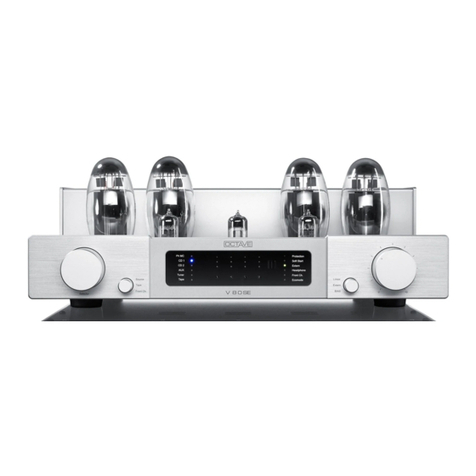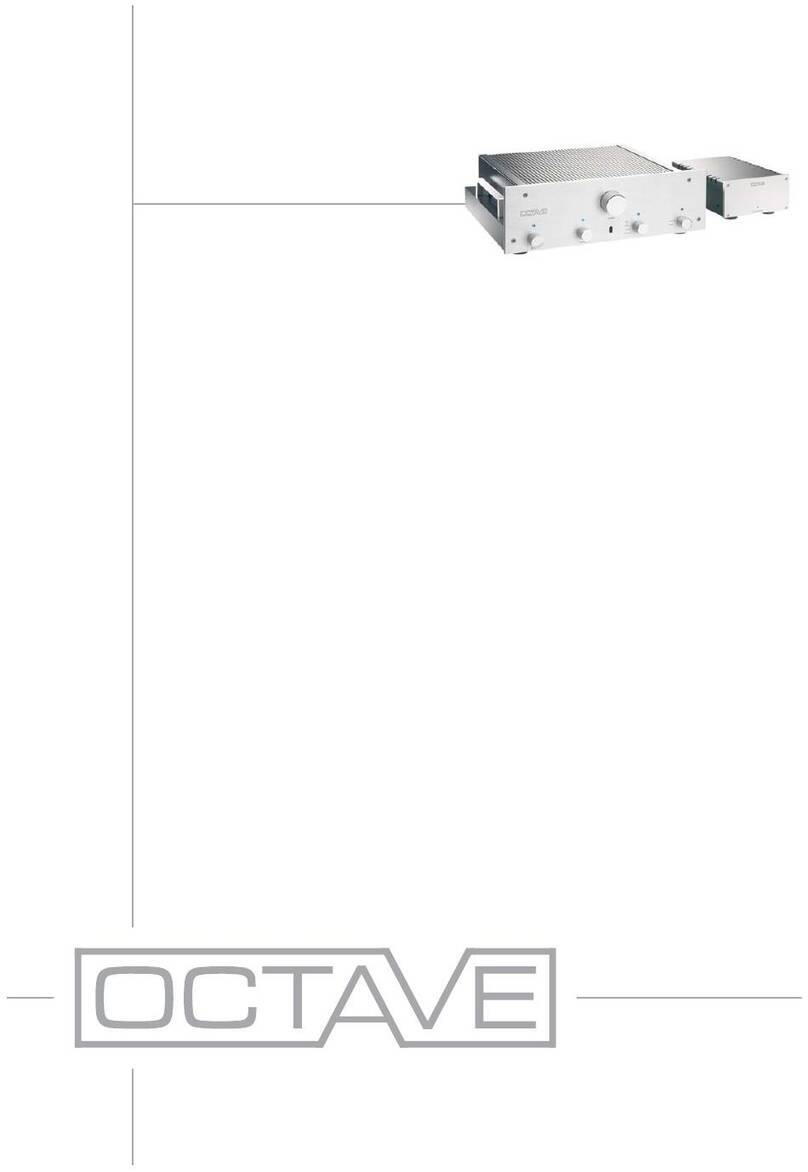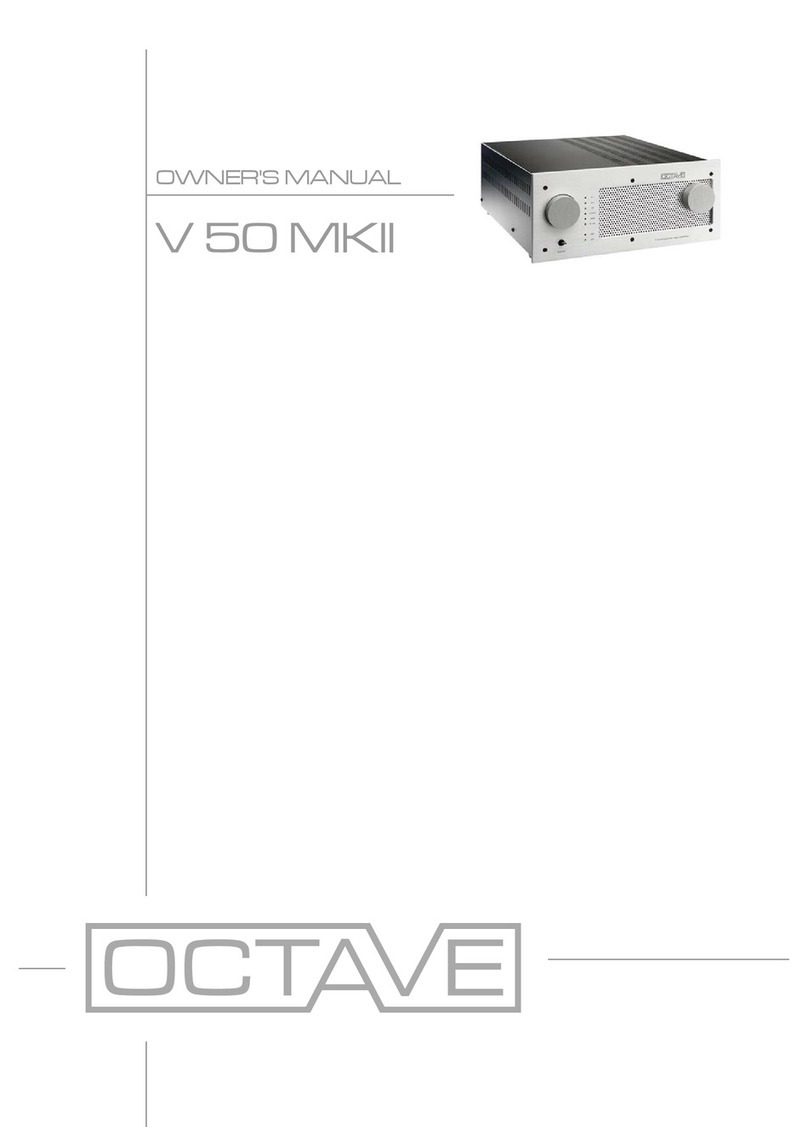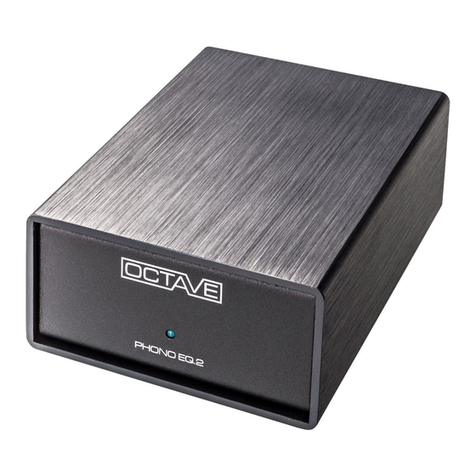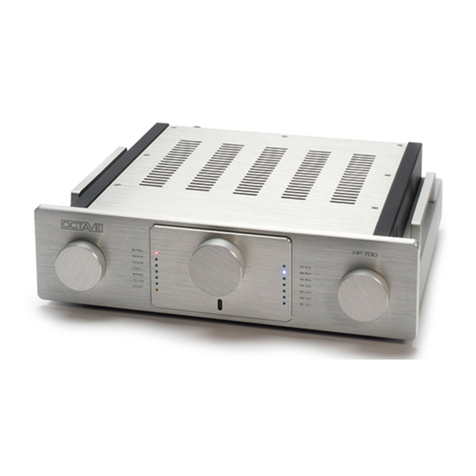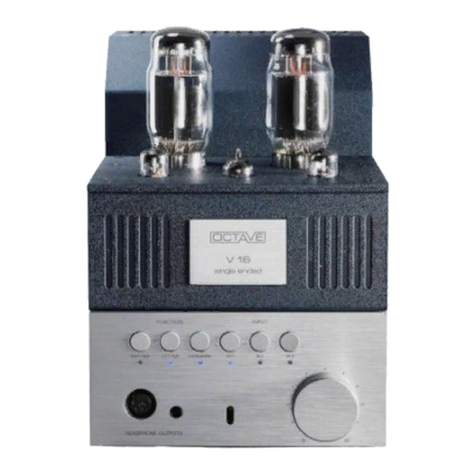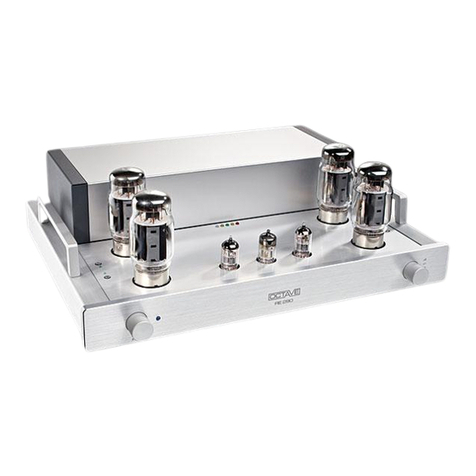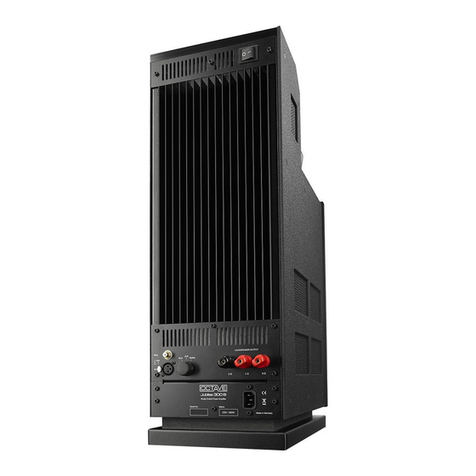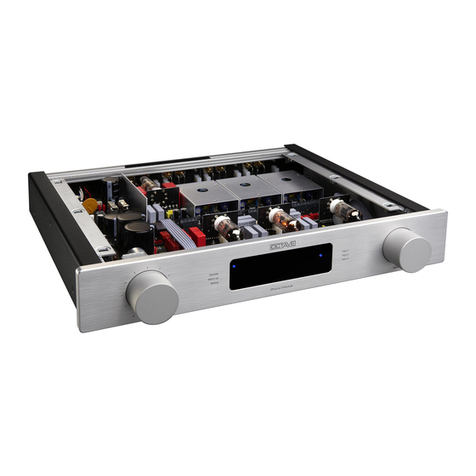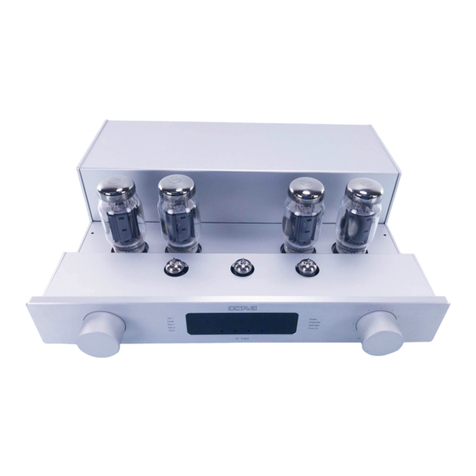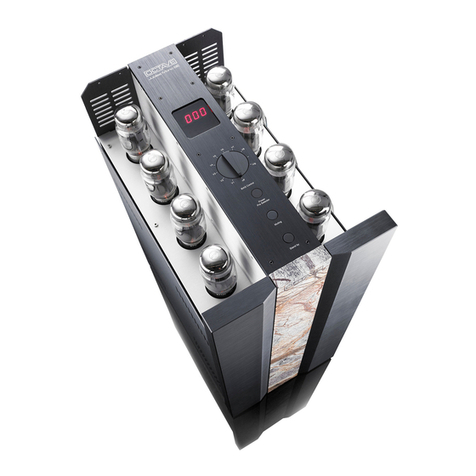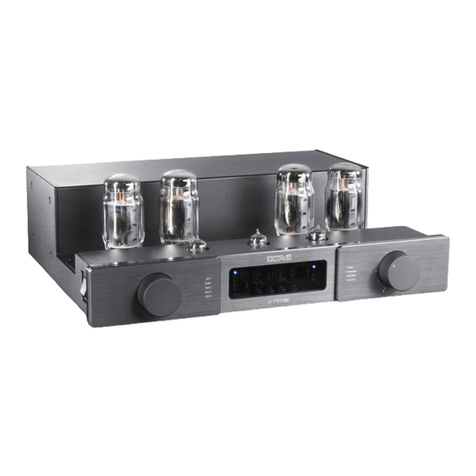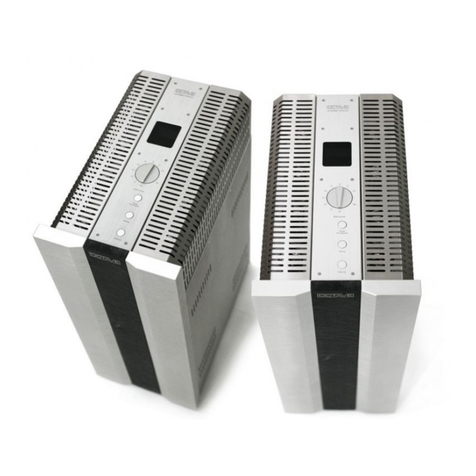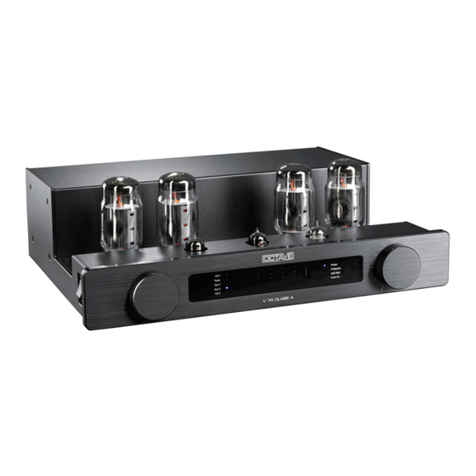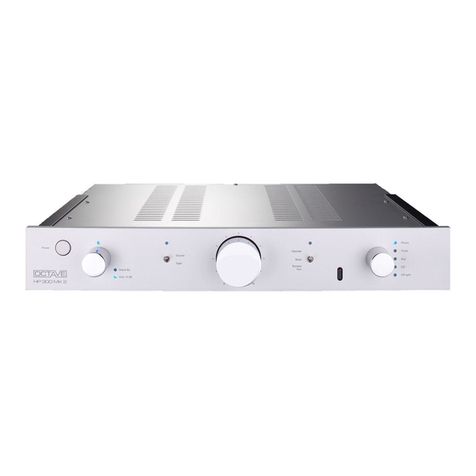
5
1. INTRODUCTION
1.2 DESCRIPTION OF THE JUBILEE PREAMPLIFIER
Circuit design
OCTAVE has designed its reference ampli-
fier – the Jubilee preamp – as a two-stage
hybrid amplifier. Tube circuitry manages the
high precision balanced stage and amplifies
the signal. The high output current require-
ments are satisfied by an output impedance
converter implemented with semiconduc-
tors. The unique combination of tubes and
transistors allows the Jubilee to do without
overall negative feedback and thus deliver
the undeniable sonic benefits of a zero
feedback design. However, any amplifier
that dispenses with negative feedback also
dispenses with the corrective mechanism
provided by negative feedback circuitry. In
the Jubilee preamplifier, we solve this prob-
lem through the extremely high specifica-
tion of the output stages and power supply
section, creating virtually perfect conditions
for achieving perfectly accurate amplifica-
tion – without the need for corrective
mechanisms.
Whether the source equipment is con-
nected via the RCA / CINCH phono or XLR
inputs, the Jubilee tube preamp always
produces a perfectly balanced output signal
and delivers an optimum sonic performance
independent of the source type. The XLR
inputs are fitted with step-up transformers
that have no sonic signature of their own.
Because they introduce no noise or phase
shifts, step-up transformers are the tech-
nology of choice for this application in pro-
fessional recording studios. What is more,
they also perform the function of a ground
lift circuit, eliminating the risk of interference
and hum that is particularly critical when
dealing with complex multi-amp rigs con-
nected via balanced inputs.
The low impedance output is yet another
feature designed to enhance the sound
quality and versatility of the Jubilee pream-
plifier. Only a semiconductor-based output
stage is able to cope with long cable runs
and integrate perfectly with low impedance
power amplifiers
It would be impossible to implement such an
uncritical output using tubes alone without
sacrificing accuracy in the low bass and
extreme high frequencies.
Outboard power supply
The outboard power supply, which was de-
veloped exclusively for the Jubilee preampli-
fier, substantially enhances the sound qual-
ity of the preamp by separating the pream-
plifier from the mains (simulated battery
operation). The separate power supply stops
noise pollution from entering the preamp's
signal processing circuitry. It also provides
highly accurate and stable electronic voltage
regulation, which is one of the ways we en-
sure this product's consistent performance
over time.
The Jubilee's sophisticated power manage-
ment system guarantees a long and reliable
life and incorporates highly refined soft-start
technologies that help the tubes achieve
their theoretical maximum service life of up
to 50,000 hours.
Build quality
The volume control with its precision ball
bearings is centrally placed within a polished
Labrador natural stone slab, flanked by two,
three-centimetre thick, solid aluminium pan-
els. The extremely stable, low resonance,
all-aluminium casing eliminates any possibil-
ity of magnetic distortion. Before leaving the
factory, each hand-built Jubilee preamplifier
is thoroughly inspected and subjected to a
48- hour soak test
